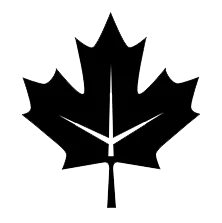CCM Premier P2.5 Junior Goalie Stick

- 0 left in stock
Free Shipping $100+

Fast Easy Returns

Best Price Promise

Ships Canada Only
Composite sticks have become more and more popular with young goalies due to their weight and ease of use. The CCM Premier P2.5 junior goalie stick is still built with the same lightweight construction, but also takes some of the features from its bigger brothers the P2.9 and Premier 2 and places them at a price point friendly to recreational and growing goalies.
The biggest draw to a composite is the relative light weight when we are comparing them to foam core sticks. This weight usually comes at the cost of feel however as composite vibrates decidedly more than foam-core/wood construction. CCM has added Zeroflux technology to the P2.5 junior goalie stick in an attempt to lessen those vibrations and make it feel much more like the foam core construction sticks.
The P2.5 junior goalie stick also features a Stiktak grip at the top of the paddle that provides a sticky grip zone that helps with the goalies ability to keep a secure grip at all times during play. CCM has also made the shaft of the stick a matte finish to help the stick slide in the goalies hand better for improved poke checking.
CCM's P2.5 goalie stick offers a sharp looking lightweight goalie stick to young goalies that are looking to get the best bang for their buck in a composite stick.
Composite sticks have become more and more popular with young goalies due to their weight and ease of use. The CCM Premier P2.5 junior goalie stick is still built with the same lightweight construction, but also takes some of the features from its bigger brothers the P2.9 and Premier 2 and places them at a price point friendly to recreational and growing goalies.
The biggest draw to a composite is the relative light weight when we are comparing them to foam core sticks. This weight usually comes at the cost of feel however as composite vibrates decidedly more than foam-core/wood construction. CCM has added Zeroflux technology to the P2.5 junior goalie stick in an attempt to lessen those vibrations and make it feel much more like the foam core construction sticks.
The P2.5 junior goalie stick also features a Stiktak grip at the top of the paddle that provides a sticky grip zone that helps with the goalies ability to keep a secure grip at all times during play. CCM has also made the shaft of the stick a matte finish to help the stick slide in the goalies hand better for improved poke checking.
CCM's P2.5 goalie stick offers a sharp looking lightweight goalie stick to young goalies that are looking to get the best bang for their buck in a composite stick.

Goalie Stick Sizing Information
Unlike other pieces of gear, Goalie Sticks are sized mostly to the goaltender’s preference and playing style rather than their height. The most important measurement, when purchasing a new goal stick, is the paddle height (the wide portion of the stick), which is usually taken from the heel of the stick to the shaft/paddle interface. The reason for the paddle height’s significance is because it sets up the goaltender’s depth in the ready stance and (if properly sized) positions the blocker in an optimal position.
Sizing Your Goalie Stick
To start analyzing the size of your goalie stick, put on your goalie skates to get an accurate height of where you will be in your stance. If you’re looking to be even more accurate, strap on your goalie pads and blocker as well. Once that is done, get comfortable in your natural stance (the one you’d be in during a majority of gameplay) and look for the following:
1. The entire blade of the stick is flush with the ground while being 1’ - 2’ in front of your feet
2. After getting your stick into the flush position, check that the inside edge of the blocker hand sits on the outside edge of the goal pad (this is while holding just above the paddle).
Goalie Stick Sizing Considerations
Goalie Stick sizing can be very subjective compared to other pieces of equipment. The reason for this is the ambiguity of each goaltenders ‘natural stance’, especially with younger goaltenders. It is rather common for children to use taller sticks in comparison to their height, as their stance depth isn’t usually as aggressive as a seasoned goalie.
The shaft length of a goalie stick is usually best left at its stock length, as it serves to counteract the weight of the blade and ideally place the center of gravity at the top of the paddle. The one exception to this rule is for advanced puck handlers, cutting the shaft will allow more power transfer when shooting as a result of being able to keep the blade flush to the ice while near the goaltender’s feet.














